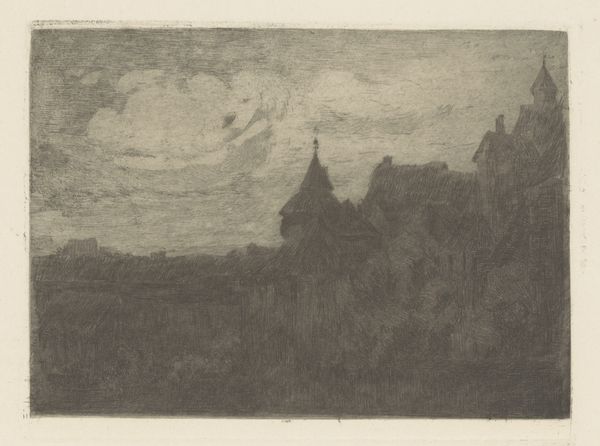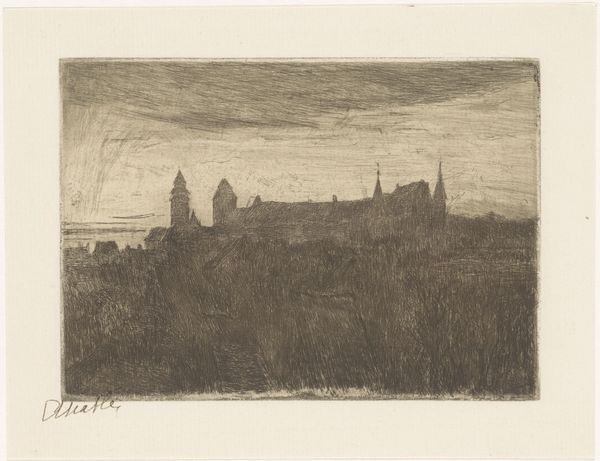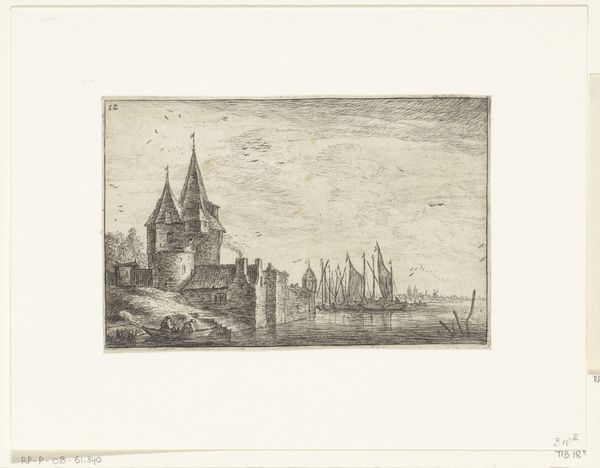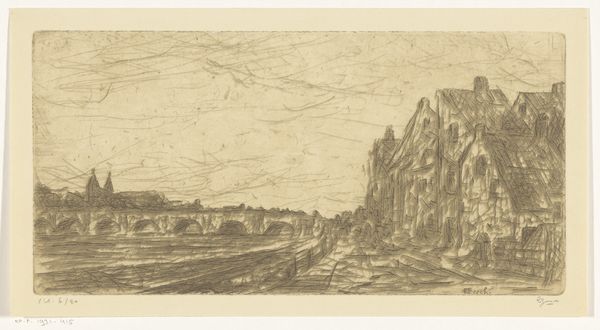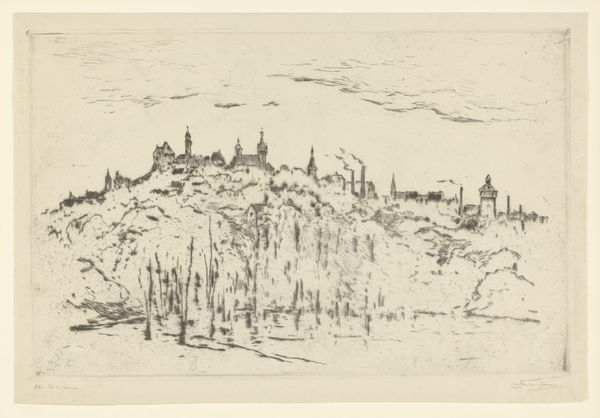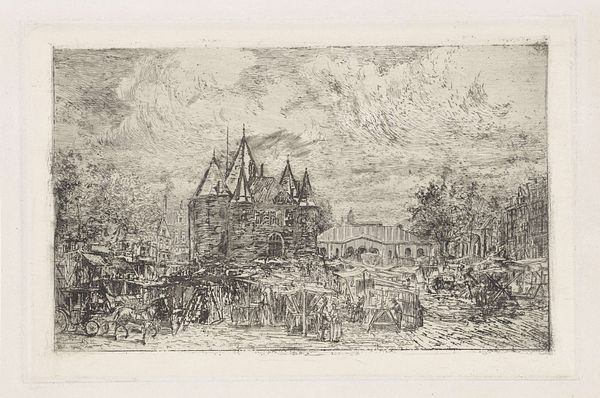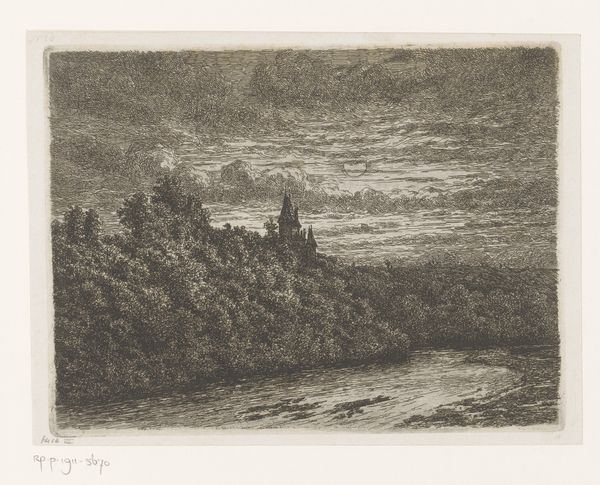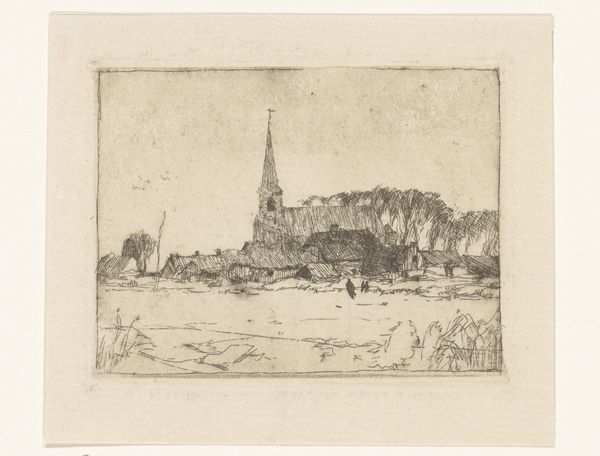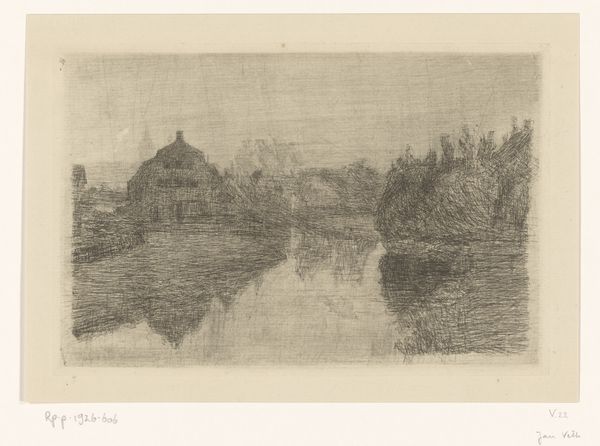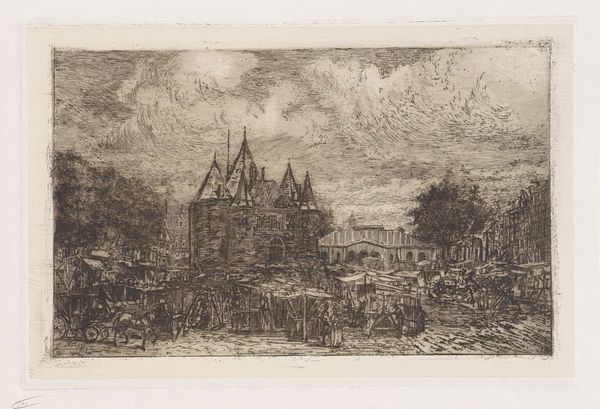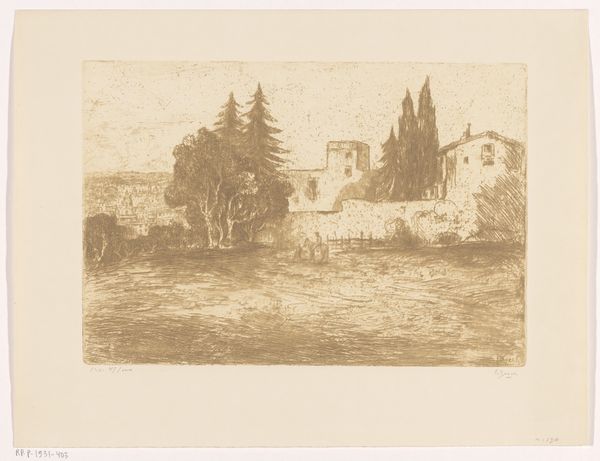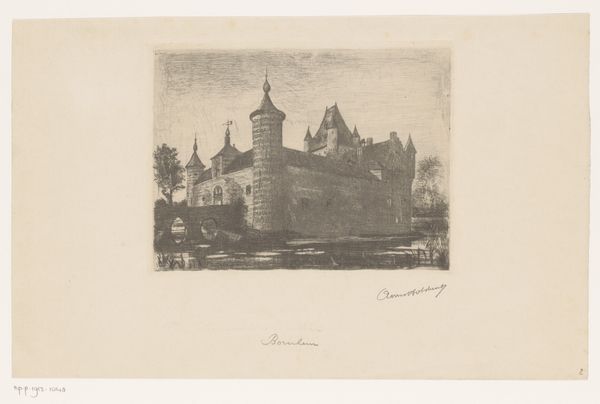
print, etching
# print
#
etching
#
old engraving style
#
landscape
#
etching
Dimensions: height 120 mm, width 158 mm
Copyright: Rijks Museum: Open Domain
Curator: Ah, "Nuremberg," a print by Etha Fles, created sometime between 1867 and 1910. An etching, it’s got that incredibly fine, almost fragile feel to it. Editor: My first impression is one of a bygone era, seen through a gauze of memory. It feels like peering through a misty window into a world that exists more in stories than in reality. Curator: Indeed! Fles, although perhaps not as widely celebrated as some of her contemporaries, played a crucial role in the Dutch art scene. She wasn't just an artist; she was a significant figure in art criticism and patronage, championing emerging talent. Her position allowed her to engage with the art world's social and institutional dynamics. Editor: Knowing that adds another layer to it for me. You see the architectural details, these medieval roofs huddled together, under a cloud that seems to both protect and loom over the city... it makes me think about the stories she's consciously choosing to capture—or maybe even the stories she's consciously obscuring. It seems she felt their burden deeply. Curator: Precisely. As an etching, the process is quite demanding and allows for such precise, deliberate lines, the kind that make you think Fles spent hours, even days, meticulously working on the plate, each scratch a thought, a memory etched in. How the urban structure meets the pastoral! What statement did Fles intent? Editor: There’s a wonderful tension between the precision and the atmosphere. I find myself wondering what stories these buildings hold. You know, those pointed roofs rising, maybe a spire or two in the distance? They speak of permanence, but the light suggests transience. A bit melancholic perhaps. Curator: It certainly has a quiet power, doesn’t it? Nuremberg, especially during this period, would have been a city undergoing tremendous change, grappling with industrialization and modernization while still clinging to its historical identity. Art exists not in a vacuum, as they say! How would have she made this etching in that world? What tools did she use? Did people commission her? How was she being perceived as an artist at that time? Editor: Thinking about those socio-political layers, you're right, it gives this piece a sort of ghostly quality. We are drawn to that very detailed style...but you know, that single, weighty cloud might say it all! What Fles felt, then perhaps, is a feeling for her own time. Curator: A fitting glimpse into a place and time seen through her singular, quietly powerful lens. Editor: Absolutely. It's a little echo of history, isn't it, whispering stories to those who pause and listen.
Comments
No comments
Be the first to comment and join the conversation on the ultimate creative platform.
